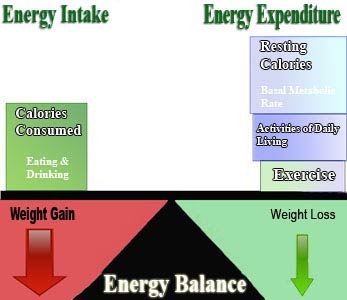- Like
- SHARE
- Digg
- Del
- Tumblr
- VKontakte
- Flattr
- Buffer
- Love This
- Save
- Odnoklassniki
- Meneame
- Blogger
- Amazon
- Yahoo Mail
- Gmail
- AOL
- Newsvine
- HackerNews
- Evernote
- MySpace
- Mail.ru
- Viadeo
- Line
- Comments
- Yummly
- SMS
- Viber
- Telegram
- JOIN
- Skype
- Facebook Messenger
- Kakao
- LiveJournal
- Yammer
- Edgar
- Fintel
- Mix
- Instapaper
- Copy Link
Lose Fat Fast With a Scientifically Valid Fat Burning Workout Plan

If you are looking to tone up, lose a few pounds around your midsection, or even lose 100 pounds, your primary fitness goal is going to be fat loss. Before you even think of starting a fat burning workout plan you need to realize that fat loss does not occur quickly.
Everyone wants to lose fat fast and go from “flab to fab” overnight, but it is just not possible. Before you start an exercise program and modify your diet, it is important to do some simple math to get a general idea of how long it will take to achieve your goal so you can go into your new program with realistic expectations
Know What You’re Getting Yourself Into
To get a general idea of how long it will take to achieve your fat loss goal, you can simply multiply how many pounds you would like to lose by 3500. The reason behind this is because one pound of body fat amounts to approximately 3500 calories.
For example, if you are looking to lose 20 pounds of fat, you need to expend 70,000 more calories than you consume! You can estimate how long it will take to burn a desired amount of body fat better if you know your body fat percentage.
Creating a 70,000 calorie deficit is not something you can do in a day, a week, or even a month. Most fitness experts, dietitians and personal trainers recommend consuming somewhere around 500 calories less than your maintenance levels (how many calories it takes to maintain your current weight) per day. Using this example, it would take a person a little over 4 and 1/2 months (140 days) to healthily lose those unwanted 20 pounds of body fat!
Fat Burning Workout Plan: General Tips
Before you even think about starting a fat burning workout plan, it is very important to familiarize yourself with the basic science behind fat loss. Once you have a firm grasp of the basic science behind fat loss and are able to think realistically, you will have a far greater chance of success. Use these general tips based on the experience of personal trainers and dietitians as the basis of your fat loss exercise program.
Know Simple Fat Loss Science
You do not need a kinesiology degree to know how fat loss works. Your body stores body fat as an energy reserve.
In order for your body to use the fat as fuel (burn fat), you must consume (eat & drink) less calories than you burn during your daily activities and exercise program. That way, your body will start dipping into fat supplies for energy.
Contrary to popular belief, the majority of body fat is not burned during exercise. Only a very small amount of body fat is used for fuel during most exercise sessions.
The bulk of body fat calories are burned by your metabolism, which includes the basic bodily processes such as respiration, organ function, and digestion. In addition to your daily physical activity (exercise sessions and activities of daily living), the thermic effect of food also contributes a small amount to your overall calories burned.
Have a Support Group
Your fat burning workout plan is best pursued with the support of others. Try to surround yourself with people who have similar fitness goals. In addition to verbal support, your support group may provide you with activity partners. If you are able to perform workouts with a partner who has similar goals, it will almost always help you both of you. You will not only enjoy working out more, but the two of you together can choose more efficient workouts which allow both workout partners to burn more calories. You can also team up with family members or friends if you can’t find an outside support group, or don’t want to join one.
Fat Burning Exercise Tips
The best fat burning exercise program will differ for most individuals. Following a specific program from a fitness magazine is likely going to lead you nowhere.
It is always going to be better if you find what works for you and eliminate what doesn’t to develop the most efficient regimen for fat loss.
Here are some helpful tips which will help the majority of people develop an efficient fat burning workout plan.
Perform High Intensity Interval Cardio
While it certainly is possible to lose weight and burn fat with low intensity, long duration cardio, the most efficient way to burn calories is with high intensity interval cardio. High intensity interval cardio involves continuous cardiovascular exercise sessions which alternate low and high intensity periods. This enables you to use very high intensities which burn more calories and train more metabolic pathways. High intensity interval cardio does not have to be your sole form of cardio, but it should be performed periodically.
Focus On Compound Resistance Training Exercises
In recent years, resistance training has gained popularity among experts as an essential part of fat burning exercise programs. The best exercises for fat burning are compound, multi-joint exercises that work out large muscle groups rather than the isolation exercises that many people mistakenly assume comprise all of resistance training. Isolation exercises are best for bodybuilders or skinny people trying to bulk out specific body parts.
Compound exercises are movements which work the muscles attached to multiple joints, stimulating the most muscle fibers in the shortest time period. These exercises should make up the majority of the weight training portion of the fat burning workout plan, as they take up less time which could be used for calorie-burning cardio. They are also less likely to cause overtraining and overuse injuries.
Perform Multiple Cardio Sessions and/or Workouts Per Day
The jury is still out on whether it is better to perform one single exercise session versus 2+ workout sessions per day. While there is scientific evidence in support of both approaches, for many people, multiple workouts per day may provide a needed edge for fat burning exercise programs.
Your busy life schedule will ultimately determine when and how long you are able to work out. If you have the ability to split your daily workouts into multiple sessions, there are numerous ways you could benefit.
First of all, if you’re exercising, you are not eating. If overeating is a problem for you, a second daily workout may decrease the chances of over consuming calories. Also, if you dread spending 60 minutes on a cardio machine, splitting your cardio sessions up into 3 twenty minute sessions, or 2 thirty minute sessions could be just what you need to get through your cardio sessions.
Try Something New, Like Cross Training
Cross training has been around for decades, and while there are fancy scientific definitions, it boils down to doing something new periodically. You can use classic cross training workouts which split your workout session between 2-3 cardio machines or modes of cardio, or you can simply perform new activities from time to time.
In addition to using additional muscles and working multiple metabolic pathways, using multiple forms of cardio can be very beneficial to your psyche. Trying new activities will likely not only prevent you from getting so bored you want to quit, but could also open your eyes to something healthy that you love and want to do for the rest of your life!
See Fat Burning Workout Plan Cardio Activities Below
Fat Burning Nutrition Tips
Eat Small Meals
The most important aspect of any fat burning workout plan is proper nutrition. Without consuming a hypo-caloric diet (consuming less calories than are burned), burning fat is scientifically impossible. If counting calories is feasible, by all means do it, but for the many people who for whatever reason cannot count calories, eating small meals is the most important part of a fat loss nutrition program.
Eating small meals not only helps you consume less calories, it can work wonders to increase your metabolism. Eating large meals can slow digestion and cause your body to be less efficient at processing the nutrients from meals in addition to preventing you from exercising at the proper intensity for the workouts in your fat burning exercise program.
Avoid Consuming Empty Calories
While consuming excess calories from healthy foods can increase your fat stores just as easily as overconsuming junk foods, it is the empty calories which promote overeating (think bag of potato chips vs. a baked potato).
If you are doing a fat burning workout plan, empty calories such as almost all sugary beverages including juices should be avoided, in addition to all processed foods which have been stripped of most of their nutrition.
Eat Before Exercise*
Contrary to the popular belief that exercising on an empty stomach burns fat for optimal results during a fat burning workout plan, it is very important to consume food usually around 60-90 minutes before exercise. The timing of the meal is different for everyone but the reasoning is the same.
The importance of the overall program (long term goal) is more important for the vast majority (exception being those looking to lose very small amounts of fat). While more fat is burned while exercising on an empty stomach, those who have eaten will have more efficient workouts, burn more calories, recover and accomplish their fat loss goals faster than those who exercise in a depleted state.
Eat After Exercise*
Consuming calories immediately after exercise is very important for recovery. Eat a small meal or consuming a pre-prepared post-workout concoction (i.e. carbohydrate-protein shake) especially after weight training.
Even when consuming a fat burning hypo-caloric diet, consuming calories after exercise is important because it will effect every subsequent workout. In a long term fat loss exercise program, if you properly replenish your body’s energy stores, each workout will be optimally efficient. This will allow you to achieve your fat loss goals as quickly as possible.
*Note about Pre- & Post- Workout Meal Timing
What you consume for your pre- and post- workout meals depends mostly on your daily caloric intake and the timing of your other meals. For example, if you finish your fat burning workout at 5pm and plan to have dinner at 5:30, there is very little point to consuming a meal after your workout. Another example would be if you just had a huge holiday dinner the night before. Eating a meal before an early morning workout could be detrimental as it could overload your digestive system and not allow your working muscles to perform optimally.
Sample Fat Burning Workout Plan
As mentioned before, even if a fat burning workout plan works for 99 out of 100 people there is no guarantee you won’t be in the 1% for which it doesn’t work. Here is a sample fat loss exercise program.
Monday
6:00am
- Cardio
- 30 minutes on elliptical trainer
- Hill interval program, level 14
- 30 minutes on elliptical trainer
6:30pm
- Weight Training
- Squats
- 3 sets of 15
- Bench Press
- 3 sets of 15
- Lat Pull Downs
- 3 sets of 15
- Dumbbell Shoulder Press
- 3 sets of 15
- Squats
- Cardio Cool Down
- 10 minutes on stationary bike
- Manual program, level 8
- 10 minutes on stationary bike
Tuesday
6:00pm
- Cardio
- 60 minutes Cross Training Session
- 20 minutes on elliptical trainer, level 10
- 20 minutes on treadmill, 6mph, 0% incline
- 20 minutes on Stairmaster, Level 10
- 60 minutes Cross Training Session
Wednesday
6:00am
- Cardio
- 30 minutes on elliptical trainer
- Hill interval program, level 15
- 30 minutes on elliptical trainer
6:00pm
- Weight Training
- Squat w/ Cable Rows
- 3 sets of 15
- Step-ups w/ Dumbbell Shoulder Press
- 3 sets of 15
- Cable Push-Pull
- 3 sets of 12
- Dumbbell Walking Lunges
- 3 sets of 12
- Squat w/ Cable Rows
- Cardio
- 45 minutes on stationary bike
- Manual program, level 8
- 45 minutes on stationary bike
Thursday
6:00am
- Cardio
- 45 minutes on elliptical trainer
- Interval program, level 14
- 45 minutes on elliptical trainer
Friday
8:00am
- Weight Training
- Dead Lifts
- 3 sets of 10
- Incline Bench Press
- 3 sets of 12
- Dumbbell Rows
- 3 sets of 15
- Dumbbell Arnold Press
- 3 sets of 12
- Dead Lifts
- Cardio
- 45 minutes on stationary bike
- Manual program, level 8
- 45 minutes on stationary bike
Saturday
9:00am
- Cardio
- 90 minute outdoor bicycle ride
- 30km at medium pace
- 90 minute outdoor bicycle ride
5:30pm
- Cardio
- 20 minutes elliptical trainer
- Hill interval program, level 16
- 20 minutes elliptical trainer
Sunday
Active Rest Day: No structured exercise sessions but try to remain active.
Try a new, fun form of physical activity such as:
Cardiovascular Activities to Consider
|
|
More About this Sample Fat Burning Workout Plan
This sample fat burning workout plan is designed for someone who wants to maximize their time in the gym. They work a typical 9-5 job with a late Friday so they are able to perform workouts before or after work.
Each weight training workout consists of 4 compound exercises which work the bulk of the entire body’s muscle mass without taking up too much time which would be better spent on cardio.
The cardio activity is a mix of low intensity, long duration workouts along with shorter duration high intensity interval training sessions. This person prefers to exercise on the weekends but if the weather is right, they can switch their workouts to standard indoor cardio machine workouts.
Fat Loss Workout Plan FAQ
Why does each weight training workout only have 4 exercises?
Since the primary fitness goal is to burn fat, only a single exercise per muscle group is needed as lean (muscle) mass maintenance is the priority, not muscle building. Any time you attempt to burn fat with a caloric deficit it is important not to overtrain muscles as the raw materials for muscle recovery and growth may not be available. Excessive breakdown could lower metabolism and possibly lead to overtraining and injury.
Weight Loss Articles
Make it your goal to lose weight healthily by burning fat and maintaining your lean muscle. Learn how long you will have to eat right and follow your fat burning workout plan to achieve your goals.
Fat Burning & Weight Loss Secrets
- Essential Tips for Effective Long-term Weight Loss
- Interactive Muscle Map / Exercise Information Guide
- Important Criteria for Setting up a Customized Workout Plan
Get a fat burning workout plan designed specifically for you to accomplish your fat loss goals. Learn how you can accomplish your weight loss goals by following a complete exercise program designed by a personal trainer and fitness expert. - Ask The Trainer Weight Loss Q&A Archive
If you have a question about workout plans to burn fat or other questions related to weight loss, see the AskTheTrainer weight loss Q&A for answers to many common weight loss questions and for general tips about a fat burning exercise program.
See Also:
About Michael Behnken
Mike Behnken is a personal trainer who holds multiple NASM certifications and a MS in Exercise Science. Mike loves fitness, travel, and photography among many other interests.

